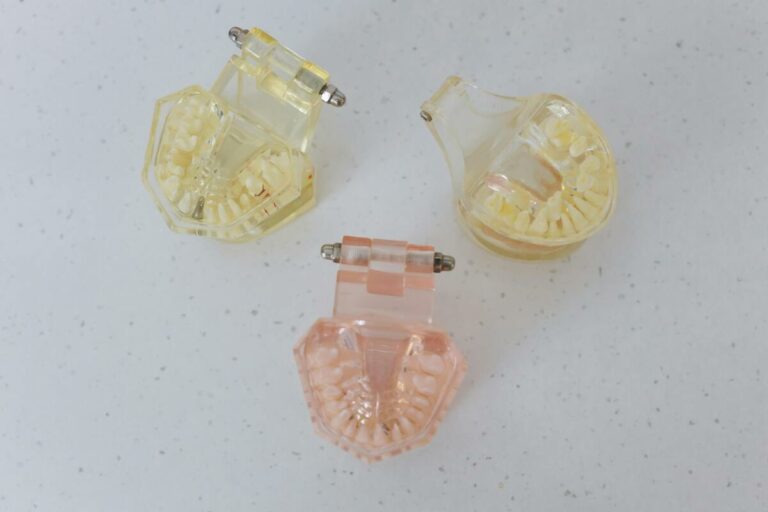Tooth Filling Options in Edison, NJ: Complete Guide to Dental Restoration Materials
When you need a dental filling in Edison, NJ, choosing the right material can feel overwhelming. You have four main options: composite resin (white fillings), amalgam (silver fillings), ceramic (porcelain), and gold. Each offers distinct advantages for durability, appearance, and cost. The best choice depends on which tooth needs treatment, your budget, and your aesthetic preferences.
Modern dental technology gives Edison residents access to both traditional and cutting-edge filling materials. While amalgam fillings have served patients well for over 150 years, today’s composite and ceramic options provide natural-looking results that blend seamlessly with your smile. At [Company], we help patients understand these options so you can make an informed decision about your dental care.
The location of your cavity plays a crucial role in material selection. Front teeth benefit from tooth-colored options like composite or ceramic for aesthetic reasons, while back teeth may be better suited for durable materials like amalgam or gold that withstand heavy chewing forces. Understanding these differences ensures you get the most appropriate treatment for your specific situation.
What Are the Main Types of Dental Fillings?
Modern dentistry offers four primary filling materials, each designed for different situations and patient needs. These materials have evolved significantly over the past decades, giving Edison patients more choices than ever before.
Composite Resin Fillings
Composite resin fillings, often called “white fillings,” are made from a mixture of plastic and fine glass particles. These tooth-colored restorations blend seamlessly with your natural teeth, making them virtually invisible when you smile or speak.
The composite material bonds directly to your tooth structure through a process called adhesive bonding. This connection actually strengthens the remaining tooth, requiring less removal of healthy enamel compared to other filling types. Your dentist can precisely color-match the composite to your existing teeth, ensuring a natural appearance.
These fillings work particularly well for small to medium-sized cavities in both front and back teeth. The material can be shaped and sculpted during placement, allowing for precise restoration of your tooth’s original form. Most composite fillings can be completed in a single visit, though larger restorations may require two appointments.
Amalgam Silver Fillings
Amalgam fillings consist of a mixture of metals including mercury, silver, tin, and copper. When these materials combine, they create a durable compound that has served patients reliably for over 150 years. The mercury in amalgam is chemically bound and not released in harmful amounts during normal use, according to the American Dental Association and FDA.
These silver-colored fillings excel in durability, typically lasting 10-15 years or more with proper care. They handle heavy chewing forces exceptionally well, making them ideal for back teeth where strength matters more than appearance. Amalgam fillings also cost less than other options, making them budget-friendly for many patients.
The placement process for amalgam is straightforward and time-tested. The material hardens quickly after placement, allowing you to return to normal eating within a few hours. While the silver color makes these fillings noticeable, they remain an excellent choice for molars where aesthetics are less critical.
Ceramic Porcelain Fillings
Ceramic fillings, also called porcelain inlays or onlays, offer the ultimate combination of strength and natural appearance. These restorations are custom-made in a dental laboratory or fabricated same-day using CEREC technology, ensuring a precise fit and beautiful aesthetics.
Porcelain closely mimics the light-reflecting properties of natural tooth enamel, creating restorations that are virtually indistinguishable from your original teeth. The material resists staining better than composite resin, maintaining its appearance over many years. Ceramic fillings also expand and contract at nearly the same rate as natural teeth, reducing stress on the restoration.
These fillings work best for larger cavities where strength and appearance are both important. While they cost more than composite or amalgam options, their longevity and aesthetics often justify the investment for many patients. The fabrication process typically requires two visits, though same-day options are available in many Edison practices.
Gold Fillings
Gold fillings represent the premium option in dental restorations, offering unmatched durability and biocompatibility. These inlays and onlays are custom-fabricated from gold alloy, creating restorations that can last 15-20 years or more with proper care.
Gold has unique properties that make it ideal for dental use. The material is extremely durable, gentle on opposing teeth, and completely biocompatible with oral tissues. Gold fillings won’t corrode, tarnish, or cause allergic reactions, making them suitable for patients with metal sensitivities.
While gold fillings are highly visible due to their distinctive color, some patients appreciate their unique appearance and exceptional longevity. The cost is significantly higher than other options, but the investment often pays off through decades of reliable service. Like ceramic fillings, gold restorations require two appointments for proper fabrication and placement.
How Do Different Filling Materials Compare?
Understanding how filling materials perform in different areas helps you make the best choice for your situation. Each material excels in certain characteristics while having limitations in others.
Durability and Longevity
Research shows significant differences in how long various filling materials last. According to large-scale studies, amalgam fillings demonstrate exceptional longevity with a mean survival time of 22.5 years, while composite fillings average 16.7 years.
Gold fillings typically outlast all other materials, often functioning for 15-20 years or more. Their superior durability comes from gold’s resistance to wear and corrosion. Ceramic fillings fall between composite and amalgam in longevity, typically lasting 10-15 years with proper care.
Composite technology has improved dramatically in recent years. Modern composite materials show much better durability than older formulations, with some studies indicating over 13 years average lifespan for posterior restorations. The key is proper placement technique and patient care habits.
Several factors affect filling longevity regardless of material. These include cavity size, tooth location, your bite force, oral hygiene habits, and dietary choices. Regular dental checkups allow early detection of any issues before they become major problems.
Aesthetics and Natural Appearance
For visible teeth, appearance often drives material selection. Composite and ceramic fillings can be precisely color-matched to blend seamlessly with your natural teeth. Advanced shade-matching techniques ensure these restorations are virtually invisible.
Composite resin offers the most versatility in color matching and can be adjusted during placement. Multiple shades can be layered to recreate the natural translucency and depth of tooth enamel. This makes composite ideal for front teeth where aesthetics are paramount.
Ceramic fillings provide the most natural-looking results, especially for larger restorations. The material’s optical properties closely match natural enamel, creating restorations that reflect light naturally. Porcelain also resists staining better than composite, maintaining its appearance longer.
Amalgam and gold fillings are highly visible due to their metallic colors. While this limits their use in aesthetic zones, some patients prefer the distinctive appearance of gold restorations. For back teeth where appearance is less critical, the metallic color may be acceptable in exchange for superior durability.
Cost Differences
Filling costs vary significantly based on material choice, with amalgam being most economical and gold being most expensive. Composite fillings fall in the middle range, while ceramic costs approach gold pricing for larger restorations.
Amalgam fillings typically cost 30-50% less than composite alternatives, making them budget-friendly for patients with financial constraints. The lower cost reflects simpler placement procedures and less expensive materials, not inferior quality.
Composite filling costs vary based on cavity size and complexity. While more expensive than amalgam, the aesthetic benefits often justify the additional cost for many patients. Insurance typically covers composite fillings at the same rate as amalgam for certain teeth.
Ceramic and gold fillings represent premium options with correspondingly higher costs. However, their exceptional longevity often makes them cost-effective over time. Consider the total cost of ownership, including potential replacement needs, when evaluating options.
Which Filling Material Is Right for Your Situation?
Selecting the ideal filling material requires considering multiple factors including tooth location, your aesthetic preferences, budget constraints, and long-term durability needs. At [Company], we help patients weigh these factors to make informed decisions.
Best Fillings for Front Teeth
Front teeth require materials that provide excellent aesthetics while handling normal biting forces. Composite resin and ceramic are the preferred options for incisors and canines due to their natural appearance.
Composite fillings work exceptionally well for small to medium cavities in front teeth. The material bonds directly to tooth structure and can be precisely color-matched for invisible results. Same-day completion makes composite convenient for busy schedules.
For larger front tooth restorations, ceramic fillings may be preferable. While requiring two visits, porcelain provides superior stain resistance and durability for extensive restorations. The investment in ceramic often pays off through years of beautiful, natural-looking results.
Avoid amalgam for front teeth due to its obvious silver color. Gold is also inappropriate for aesthetic zones unless you specifically desire its distinctive appearance. Focus on tooth-colored materials that preserve your smile’s natural beauty.
Best Fillings for Back Teeth
Molars and premolars endure significant chewing forces, making durability a primary consideration. All four filling materials can work for back teeth, but each offers different advantages.
Amalgam excels for large cavities in back teeth where strength matters most. Its proven track record of 10-15+ years service makes it reliable for heavy-duty applications. The lower cost also makes amalgam practical for patients with budget constraints.
Composite technology has advanced enough that modern materials can handle most back tooth applications. While not quite as durable as amalgam, composite offers aesthetic benefits even for back teeth. Many patients prefer avoiding any metallic restorations in their mouth.
Gold provides the ultimate in back tooth durability, often lasting 15-20 years. If cost isn’t a primary concern and you want maximum longevity, gold represents the premium choice. The distinctive appearance may actually be preferred by some patients.
Ceramic works well for back teeth when both strength and aesthetics matter. These restorations handle normal chewing forces while providing natural appearance. Consider ceramic when you want the best of both worlds.
Considerations for Children
Pediatric dental fillings require special consideration due to developing teeth and potential need for future treatment. Primary (baby) teeth may not need the most durable materials since they’ll eventually fall out naturally.
Composite fillings work well for children’s teeth, providing good durability for the limited time primary teeth remain. The tooth-colored appearance helps maintain normal dental development and self-confidence. Quick placement also minimizes chair time for young patients.
For permanent teeth in children and teenagers, consider long-term durability. These teeth need to last for decades, making material choice more critical. Discuss options with your pediatric dentist to determine the best approach for your child’s specific situation.
Safety considerations favor mercury-free options for children when possible. While amalgam is considered safe by major health organizations, many parents prefer composite or ceramic alternatives. Discuss any concerns with your dentist to make the best decision for your family.
Dental Filling Costs and Insurance in Edison, NJ
Understanding filling costs helps you budget for necessary dental care while maximizing your insurance benefits. Edison dental practices offer competitive pricing with various payment options to make treatment affordable.
Edison Filling Prices by Material
Dental filling costs in Edison, NJ typically range from $100 to $500 per tooth, depending on material type and cavity complexity. These prices reflect local market conditions and practice overhead costs.
Amalgam fillings cost $100-$200 per tooth, making them the most economical option. The straightforward placement procedure and inexpensive materials keep costs low while providing reliable restoration.
Composite fillings range from $150-$350 per tooth in the Edison area. The higher cost reflects more complex placement procedures and premium materials, but many patients find the aesthetic benefits worth the investment.
Ceramic fillings typically cost $300-$500 per tooth due to laboratory fabrication or advanced CEREC technology. While expensive initially, their longevity and appearance often justify the investment for appropriate cases.
Gold fillings represent the premium option at $400-$600 per tooth or more. The high material costs and custom fabrication drive pricing, but exceptional durability makes gold cost-effective over decades of service.
New Jersey Dental Insurance Coverage
Most dental insurance plans cover basic fillings at 80% of usual and customary fees after meeting your deductible. Delta Dental of New Jersey offers various plans with different coverage levels for restorative procedures.
The New Jersey State Dental Plan provides 80% coverage for basic services including fillings when using in-network providers. This significant coverage helps make necessary dental care more affordable for state employees and retirees.
Insurance typically covers composite fillings at the same rate as amalgam for front teeth, but may apply amalgam pricing limits for back teeth. Check with your insurance provider to understand your specific benefits and any material restrictions.
Consider supplemental dental plans if your current coverage is limited. Many practices also offer financing options or payment plans to help spread treatment costs over time. Don’t let cost prevent you from getting necessary dental care.
Same Day Fillings and Emergency Dental Care in Edison
Modern technology allows many fillings to be completed in a single visit, making dental care more convenient for busy Edison residents. CEREC technology enables same-day ceramic restorations when time is critical.
CEREC Same Day Restorations
CEREC (Computer Assisted Design and Manufacturing) technology revolutionizes dental care by creating high-quality ceramic restorations in about 90-120 minutes. This advanced system eliminates the need for temporary fillings and second appointments.
The process begins with digital impressions using an intraoral scanner, avoiding messy traditional impressions. Computer software designs your restoration based on your tooth’s original anatomy, ensuring proper fit and function.
A milling machine fabricates your ceramic filling from a solid block of porcelain while you wait. The restoration is then bonded to your tooth using advanced adhesive techniques, completing the entire process in one visit.
Same-day technology works best for single-tooth restorations like inlays, onlays, and crowns. While not every situation is suitable for CEREC treatment, many routine fillings can benefit from this convenient approach.
Edison Emergency Dental Services
Dental emergencies don’t follow normal business hours, making access to urgent care essential. Many Edison practices offer emergency services for patients experiencing severe pain, trauma, or lost fillings.
Emergency filling replacement can often be accomplished with temporary materials to provide immediate relief. These temporary restorations protect the tooth and reduce pain until permanent treatment can be completed.
Same-day appointments may be available for urgent situations, especially when practices have CEREC technology. Call ahead to explain your situation and get guidance on immediate care needs.
For after-hours emergencies, some practices provide on-call services or can refer you to emergency dental clinics. Keep your dentist’s emergency contact information readily available for unexpected situations.
Common Questions About Dental Fillings
Understanding common concerns helps you make informed decisions about your dental care. These frequently asked questions address the most important issues patients face when choosing filling materials.
Which Dental Filling Lasts the Longest?
Gold fillings offer the longest lifespan at 15-20+ years, followed by amalgam at 10-15+ years. Modern composite fillings typically last 5-10 years, though advanced formulations show improved durability approaching amalgam longevity.
The actual lifespan depends on multiple factors including cavity size, tooth location, your oral hygiene, and dietary habits. Large fillings generally don’t last as long as small ones regardless of material. Back teeth experience more stress than front teeth, potentially affecting durability.
Proper care significantly impacts filling longevity. Regular brushing, flossing, and dental checkups help identify problems early. Avoiding hard foods and teeth grinding also protects your restorations from premature failure.
Consider total cost of ownership when evaluating options. While gold costs more initially, its exceptional longevity may make it economical over time. Discuss expected lifespan with your dentist based on your specific situation.
Are White Fillings Better Than Silver Fillings?
The answer depends on your priorities regarding aesthetics, mercury concerns, and performance. Modern composite materials have evolved to match or exceed amalgam’s durability while providing superior aesthetics and mercury-free composition.
White fillings offer obvious aesthetic advantages, especially for visible teeth. They bond directly to tooth structure, potentially strengthening the remaining tooth. Composite also requires less removal of healthy enamel during placement.
Silver amalgam fillings provide proven durability and lower cost. They handle heavy chewing forces exceptionally well and rarely fail due to fracture. For back teeth where appearance isn’t critical, amalgam remains an excellent choice.
The “better” option depends on your individual needs. Front teeth typically benefit from white fillings, while back teeth may be candidates for either material. Discuss your priorities with your dentist to determine the best approach.
Is Mercury in Dental Fillings Safe?
Extensive research by the American Dental Association, FDA, and World Health Organization has determined that mercury in amalgam is chemically bound and not released in harmful amounts during normal use. The scientific consensus supports amalgam safety for most patients.
Mercury in amalgam fillings is bound within the metal matrix, preventing significant release under normal conditions. The small amounts that may be released are well below levels considered harmful by health authorities.
Some patients prefer mercury-free alternatives for peace of mind, especially pregnant women or those with known mercury sensitivities. Composite, ceramic, and gold fillings provide excellent mercury-free options.
If you have concerns about existing amalgam fillings, discuss them with your dentist. Unnecessary removal of sound amalgam fillings can actually increase mercury exposure during the removal process.
How Much Do Dental Fillings Cost in Edison?
Edison dental filling costs range from $100-$500 per tooth depending on material choice and complexity. Amalgam fillings at $100-$200 represent the most economical option, while gold fillings at $400-$600+ are most expensive.
Insurance typically covers 80% of basic filling costs after meeting your deductible. Most plans cover composite fillings at the same rate as amalgam for front teeth, though restrictions may apply for back teeth.
Additional factors affecting cost include cavity size, tooth location, and any complications during treatment. Multiple cavities may qualify for package pricing at some practices, reducing per-tooth costs.
Many Edison practices offer financing options or payment plans to make treatment more affordable. Don’t postpone necessary care due to cost concerns – untreated cavities only get larger and more expensive over time.
Get Expert Dental Filling Care in Edison, NJ
Choosing the right dental filling material is an important decision that affects both your oral health and your smile’s appearance. Whether you need composite fillings for aesthetic purposes, amalgam for durability, ceramic for the best of both worlds, or gold for maximum longevity, the right choice depends on your specific needs and priorities.
At Oracare Dental Centre, our experienced team helps Edison residents make informed decisions about their dental care. We offer all modern filling materials and use advanced techniques to ensure comfortable, long-lasting results. Our convenient Edison location provides comprehensive dental services with flexible scheduling to accommodate your busy lifestyle.







